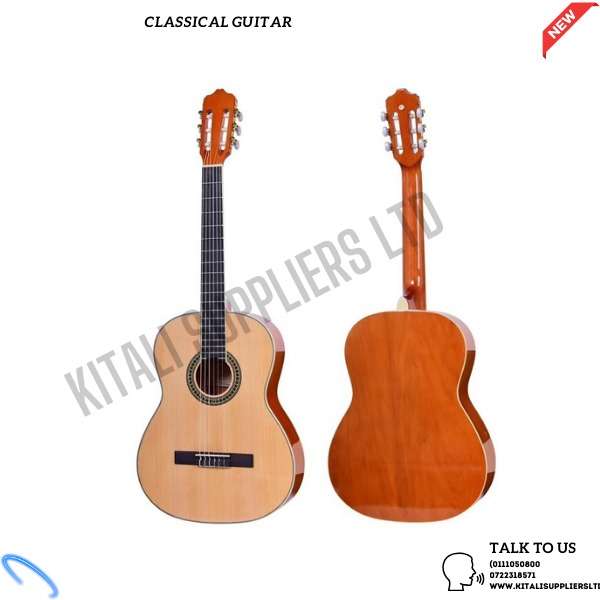Description
The classical guitar, also known as the nylon-string guitar or Spanish guitar, is a versatile and elegant instrument with a rich history and tradition. Classical guitars typically have a smaller body size compared to steel-string acoustic guitars. The body is traditionally crafted from tonewoods such as cedar, spruce, or mahogany, which contribute to its warm and resonant tone. The top (soundboard) is often made of solid wood for optimal sound projection and resonance.Classical guitar necks are usually wider and flatter than those of steel-string guitars, facilitating fingerstyle playing and intricate chord voicings. The neck is often made from mahogany or cedar and may feature a smooth satin or gloss finish for comfortable playing. The fretboard of a classical guitar is traditionally made of rosewood or ebony and features a flat radius. It typically has a wider width and shorter scale length compared to steel-string guitars, allowing for easier fingerpicking and chord transitions. Classical guitars are strung with nylon strings, which produce a warm, mellow tone and are easier on the fingers compared to the steel strings found on acoustic and electric guitars. The bass strings are usually wound with metal wire, while the treble strings are made of nylon or fluorocarbon. Classical guitar headstocks often feature a slotted design, where the strings are threaded through slots in the headstock rather than attached to tuning pegs. This design helps maintain string tension and tuning stability. The bridge of a classical guitar is typically made of rosewood or ebony and is glued to the soundboard. The strings are tied to the bridge using traditional knots, which allows for easy string changes and adjustment of string height (action). Classical guitars feature fan bracing or lattice bracing inside the body, which helps support the soundboard and distribute vibrations evenly across the top. This bracing pattern contributes to the guitar's rich, balanced tone and responsive dynamics. Classical guitars are known for their warm, mellow tone with a strong emphasis on midrange frequencies. They excel in fingerstyle playing, arpeggios, and classical repertoire but are also used in various musical styles, including flamenco, jazz, and folk. Classical guitar technique typically involves fingerpicking with the right hand (using fingers rather than a pick) and precise fretting with the left hand. Players often use techniques such as arpeggios, tremolo, and rasgueado (flamenco strumming) to create expressive and intricate music.




